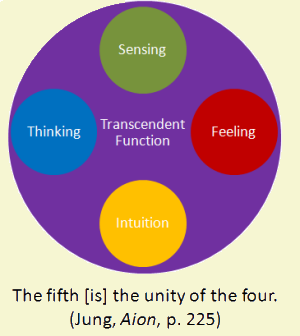 A new, peer-reviewed paper has just been published in The Journal of Analytical Psychology (JoAP), with the title The five functions of psychological type. JoAP is the leading international journal primarily for Jungian Analysts.
A new, peer-reviewed paper has just been published in The Journal of Analytical Psychology (JoAP), with the title The five functions of psychological type. JoAP is the leading international journal primarily for Jungian Analysts.
The paper argues that it is better to refer to psychological type theory (better known as Myers-Briggs typology) as containing five functions, not four.
The abstract is openly available at the JoAP website. This blog page provides a summary of the content.
One-sidedness
C.G. Jung complained that most readers missed the point of his 1921 book Psychological Types. In 1934 he added a foreword trying to steer readers in the right direction. However, this did not have the impact he desired and he reiterated his concerns, about the misunderstanding of his theory, several times over the next quarter of a century.
Jung saw having a psychological type as being a problem. Although it is a stage of development that one has to go through, being a type creates various difficulties. These include interpersonal conflict, intrapersonal stress, misunderstandings over the nature of truth, developmental issues, and many others. At the heart of these problems is the fact that being a type involves being one-sided and collective. If a person is a psychological type, he/she is not whole and is not a unique individual.
Jung’s solution
Jung’s solution to this problem of one-sidedness was to develop a fifth function that replaces a typological function as the dominant function of consciousness. He called it the transcendent function – which is nothing metaphysical or mysterious, but an emergent form of cognitive function that continually changes. Jungian analysts do not necessarily use the term transcendent function very often, but refer to the symbol, to which the transcendent function is closely related. However, from a Myers-Briggs perspective that focuses on cognitive functions, the term symbol seems to have little relevance.
Isabel Briggs Myers’ solution
Isabel Briggs Myers’ saw having a type more as a virtue than a problem. She did recognise the need for balance, but felt that it could be achieved through the auxiliary function. She acknowledged that people could transcend their type, but she thought that the transcendent function was unreachable for most people. Also, whereas Jung used psychological type theory constructively, to show how people could realise their potential and become a new, unique individual, Isabel Briggs Myers used psychological type to explain who people are, which Jung described as a reductive or Freudian use of his theory.
The main points of difference
There are various minor differences between the two theorists. For example, Isabel Briggs Myers felt type would stay the same throughout life because it is inborn. For Jung, even if there is an original disposition, type could change throughout life and become obsolete or just a part of one’s history. Also, Isabel Briggs Myers believed everyone fell into one of two groups – e.g. introverts or extraverts – but Jung believed there is a third, larger group in the middle.
However, the main difference is the transcendent function, which is the most important part of Jung’s book and his solution to the type problem. It is missing from Myers-Briggs typology, which aims to achieve balance through the auxiliary function. Jung had considered this option (i.e. balance via an auxiliary) but dismissed it.
Why do they differ?
Much of the responsibility for the divergence of the two theories has to lie at Jung’s door. He made three big mistakes. The first was the timing of publication of his materials. Around the end of the first world war, he laid down the foundations of his theories in four key works. Psychological Types was one of those works, and his essay The Transcendent Function was another. But he neglected to publish the latter essay. It was found languishing in his files in the late 1950s.
Another mistake was Jung’s use of language – for example, referring to the four functions and the symbol. This gives the incorrect impression that there are only four psychological functions. Yet the transcendent function is closely related to the symbol. From the point of view of Jungian analysis, it makes sense to discuss the symbol because of its importance in the rest of Jung’s theories. However, for an audience interested only in psychological functions, it can hide the most important function of all.
A third mistake was a misleading letter from Jung to Isabel Briggs Myers in 1950. She had sent Jung a copy of her questionnaire and asked to visit him to discuss it whilst she was in Europe. Jung refused, rejecting the opportunity to meet with her to explain how she had misunderstood his book Psychological Types. Furthermore, his secretary sent an overly diplomatic letter that gave the opposite impression to Jung’s position – it suggested (incorrectly) that Jung supported her work. The evidence for this is explained in detail in the JoAP article. Isabel Briggs Myers could do nothing other than take the letter in good faith and continue with her line of development.
The bottom line
As a result, there are some important differences between Jungian and Myers-Briggs typology, the most significant of which is the omission of the transcendent function. Although many people find Myers-Briggs typology to be meaningful and useful, there is a great deal of additional insight that can be gained by recognising that psychological type theory contains five functions, not four.
